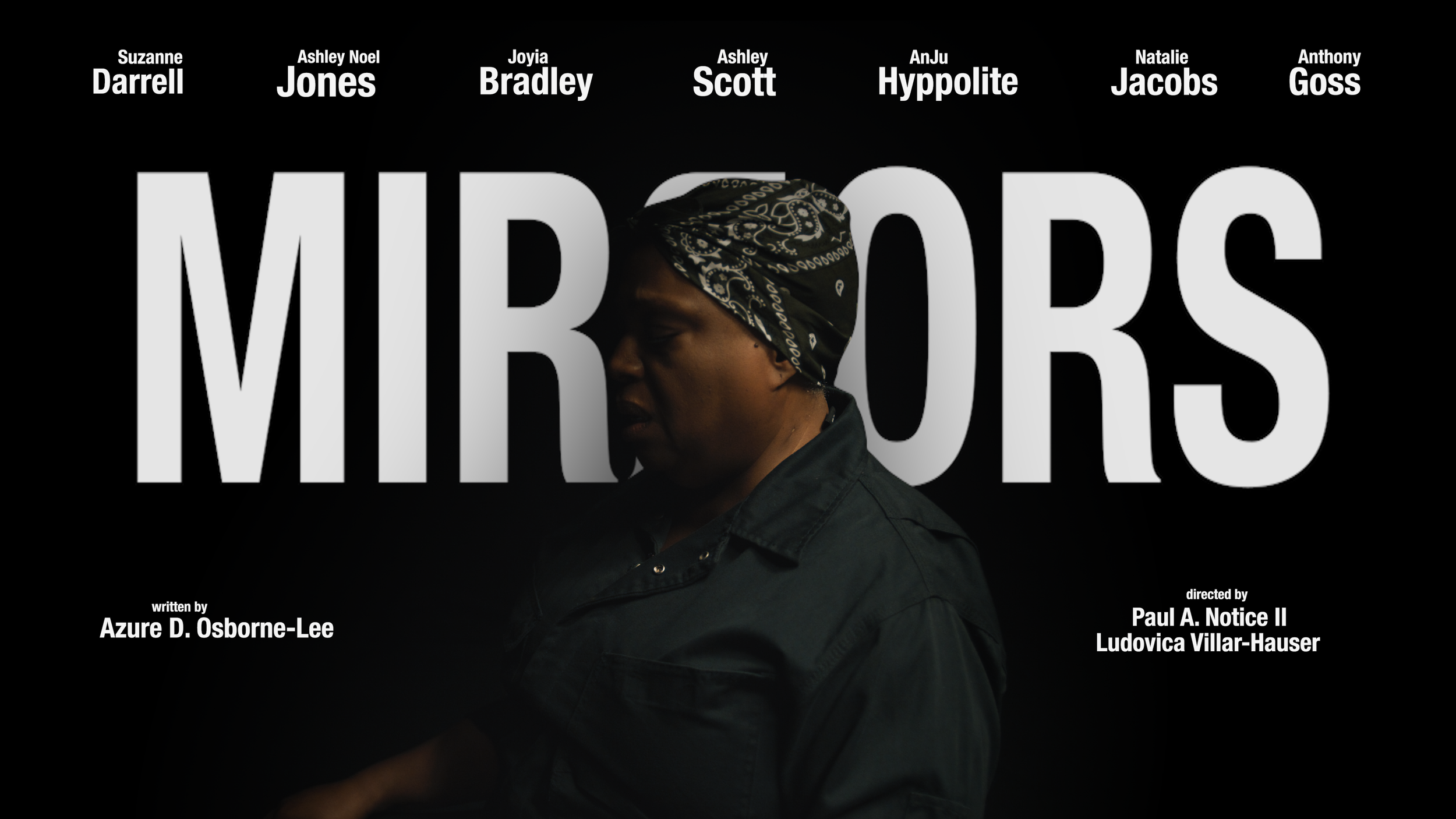Here's How I Filmed "MIRRORS" in FOUR DAYS
Director’s Note
11.09.21 “How do you shoot a movie in FOUR Days?”
So, when I was asked to direct & produce the film adaption of MIRRORS, we were faced with a daunting issue: Instead of the usual 28-35 days needed to shoot this film adaption, we only had four.
So, the question became: “How do we shoot this in FOUR days?” Yep, that’s right FOUR DAYS. I got to thinking, scheming, and dreaming, and eventually, here were my solutions:
1. Test Movie - I didn’t just draft a shot list. And I didn’t just painstakingly write out each and every step for camera blocking in that shot list too. I literally shot a test movie w/ nearly every desired camera movement, lens, focal length, etc.
Then I cut it all together in Pre-Production. This was so that everyone cast & crew could see what exactly we were doing in each scene. It was imperative to do this since we only had our Cinematographer for a couple of rehearsals and that was it.
2. 360-Lighting - I drafted the lighting scheme and budget for a lighting rig that would cast beautiful shadows w/ soft overhead light. Then, I leaned on the expertise of my gaffer Dominik Czaczyk to tweak and add suggestions in making it work.
3. Black Space - We hung 20ft black velour curtains from the scaffolding, then set about virtually removing everything that wasn’t covered in rich Black, sun-soaking duvetyn. I was driving some of the crew nuts, but that attention to detail is what paid off in the end.
Apart from the ADR, most of my post-production work in this piece was Audio Remastering & fixing the artifacts found in the Black Space from the first day we really used the 360-lighting.
You’ll be surprised how much you’ll have to hide in an entire room. However, this allowed us to make more cuts between different takes and edit for continuity errors.
However, Creating the Black Space (both visually and metaphorically) became a far more complex element in this film than just that. It involved planning, experimenting, adapting, and execution. From drafting the schematics for the soft overhead lighting rig to covering EVERYTHING in the background with a soft non-reflective material.
The Black Space at the very beginning was a crucial part of this reimagining.
I had to take certain care with the details, even when they seemed almost inconsequential during principal photography- proved well worth it during post.
It allows the audience to focus their attention on what truly matters in the scene. This aesthetic also allowed for seamless transitions between scenes, which brought us deeper into our protagonist's perspective.
- Paul N.
Always Question. Always Explore.
Synopsis
Set in the sleepy Mississippi town of Etheridge in the summer of 1960, MIRRORS depicts the lives of three African-American women bound by love and loss and family, and the secrets of their shared past.
When 17-year-old Alma Jean finds her mother dead, she must pack up her life and move in with her mother's ex-lover, a woman she doesn't know. Her new guardian, Bird Wilson, is the town pariah and unused to sharing her home. Will mourning the death of a shared loved one bring Alma Jean and Bird together or push them further apart?
Film Directed & Edited by
Paul A. Notice II
Stage Directed by
Ludovica Villar-Hauser
Written by
Azure D. Osborne-Lee
Starring
Suzanne Darrell
Ashley Noel Jones
A Letter to the Crew:
This was a result of a collective effort: from George, Alessandro & Seth (the Grips) helping set the lights, purchase materials, and build out the soft overhead light rig; to Dennis (DP) and conjuring excellent lighting solutions and expertise during the shoot. From Katrina (1st AD) keeping us on schedule while being the first in and last out each night, to Mano (Sound Mixer) gifting us with excellent audio and best practices advice. From the Renaissance-like expertise and remarkable dedication of Dominik (Gaffer, Boom Operator, Steadicam Operator), to Kurt (1st AC) pulling focus under pressure.
I had the vision, but ya’ll had the Juice. And I am forever thankful.
- Paul N.
This program is supported, in part, by public funds from the New York City Department of Cultural Affairs in partnership with the New York City Council.




